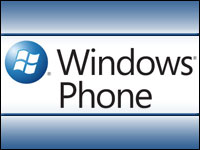
HTC rolled out two new Android phones for the European and Asian markets on Wednesday, as well as an update to its Sense user interface and a new online service featuring remote phone locate and wipe services.
The Desire HD is similar to the Evo model the company released in North America this year. The Desire Z shares similarities with the T-Mobile-branded G2. It is expected to arrive on North American shores later this year. Both devices will be available in Europe and Asia in October, according to HTC.
While the phones are appealing devices, they’re nothing revolutionary and it’s the updates to the Sense UI and the new portal service that should get most of the attention, Canalys mobile industry analyst Tim Shepherd told TechNewsWorld.
Sense Refresh
After all, it’s the Sense UI that has elevated HTC — formerly a relatively small and obscure Taiwanese device manufacturer — into a force to be reckoned with among handset makers.
“Frankly, it’s the vendor who’s been able to enhance and adjust the standard Android experience the most and arguably the best, and as a result, it’s a vendor with good differentiation from it’s competitors,” he said.
The Sense UI changes add onboard image-editing and effects enhancements. New mapping capabilities in HTC Locations will allow for what HTC calls “instant on-demand mapping without download delays.”
“They’ve done a good job with it, and it looks solid,” Shepherd said.
Web Portal
The online portal, while intriguing, is more challenging, he said.
The portal allows a handset owner to locate his or her phone and make it ring loudly, much like the features Apple’s Mobile Me service provides. The service also allows for remote locking, forwarding and data-wiping functions. Users can also archive mobile content including contacts and messages, as well as add wallpapers, sounds or plug-ins.
While these features may be useful, Shepherd worries that HTC doesn’t have the horsepower to properly maintain the service.
“It isn’t Nokia. It doesn’t have the massive scale to throw into making these services work,” he said. “There are potentially some big challenges to live up to.”
Phone Specs
While the phones announced this week do share similarities with existing HTC handsets, Shepherd said the DNA is obviously distinct enough to consider them separate lines.
Both phones feature the new HTC Fast Boot technology designed to get phones running in a fraction of the time of most smartphones.
The Desire HD, as the name might suggest, is positioned as a multimedia consumption device as much as a phone. It features a 4.3 LCD screen with Dolby Mobile and virtual surround sound and is powered by a new 1 GHz Snapdragon processor.
The 8-megapixel camera is capable of recording 720p high-definition video.
The Desire Z is positioned as a messaging phone. With a hinged case that opens to reveal a full QWERTY keyboard, it is designed for typing text messages and social network updates.
It’s capable of recording 720p video with its 5 megapixel camera and is powered by an 800 MHz Qualcomm processor touted for its battery-saving properties.



















































